Answered step by step
Verified Expert Solution
Question
1 Approved Answer
Please don't say this need more info as this is the entirety of the question given. Problem 5-3A Perpetual: Alternative cost flows LO P1 Montoure
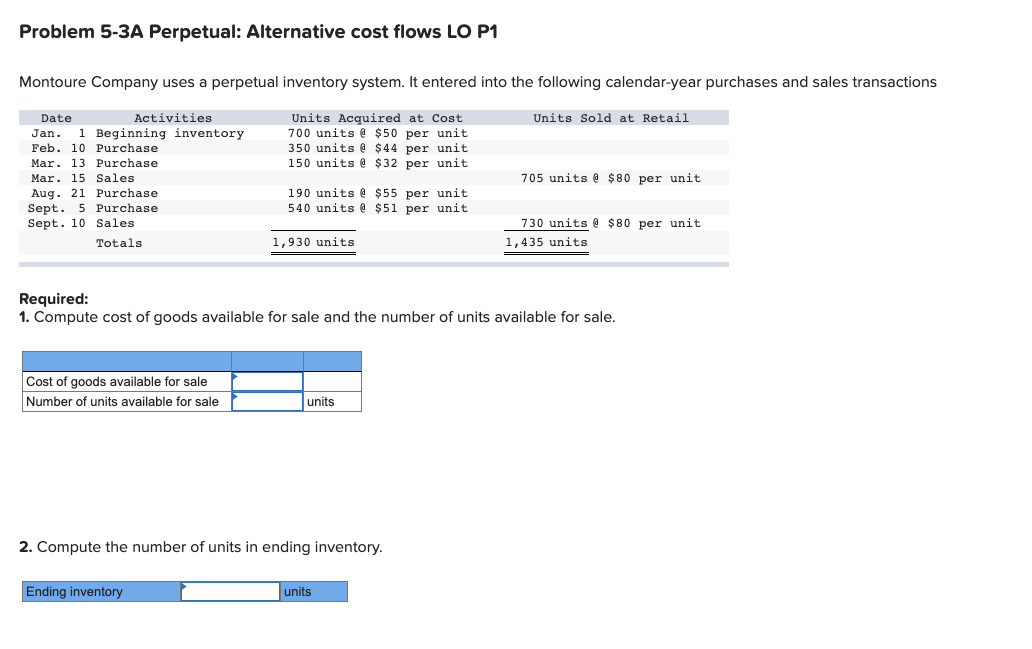

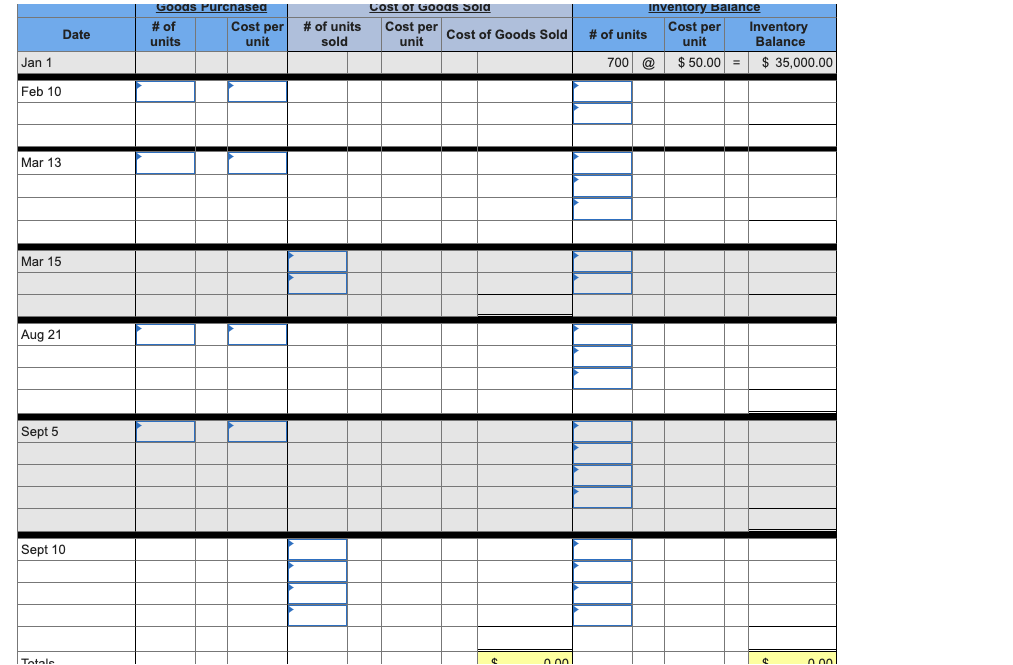
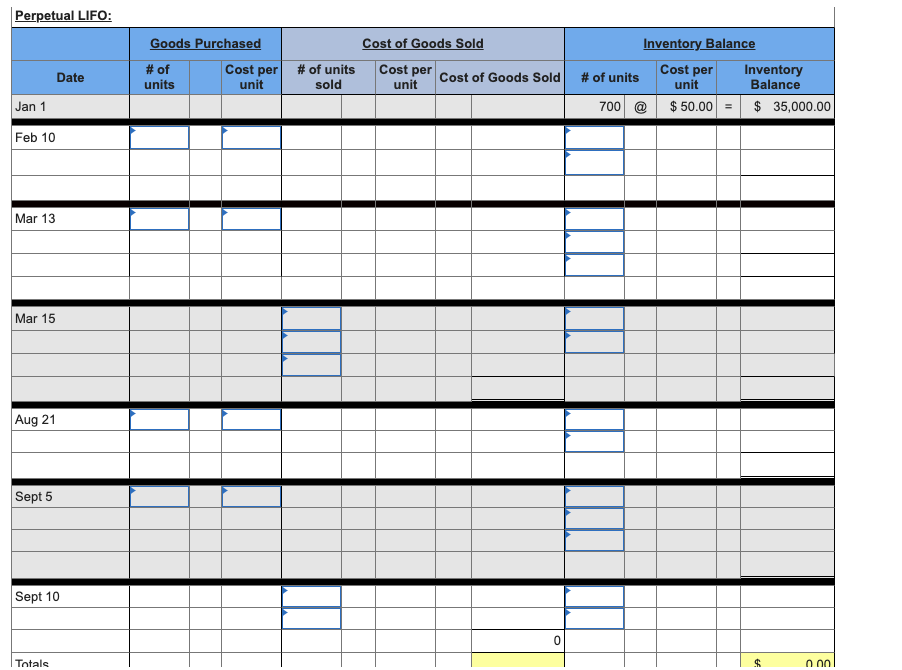
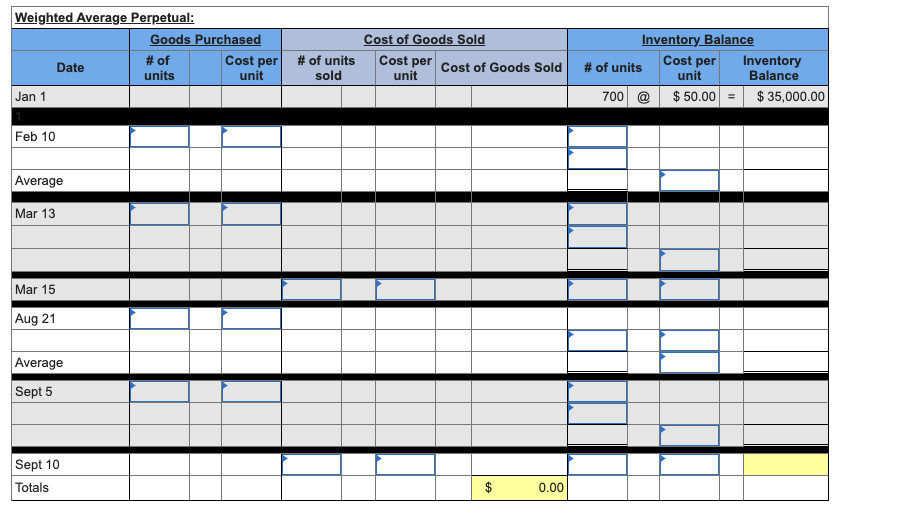
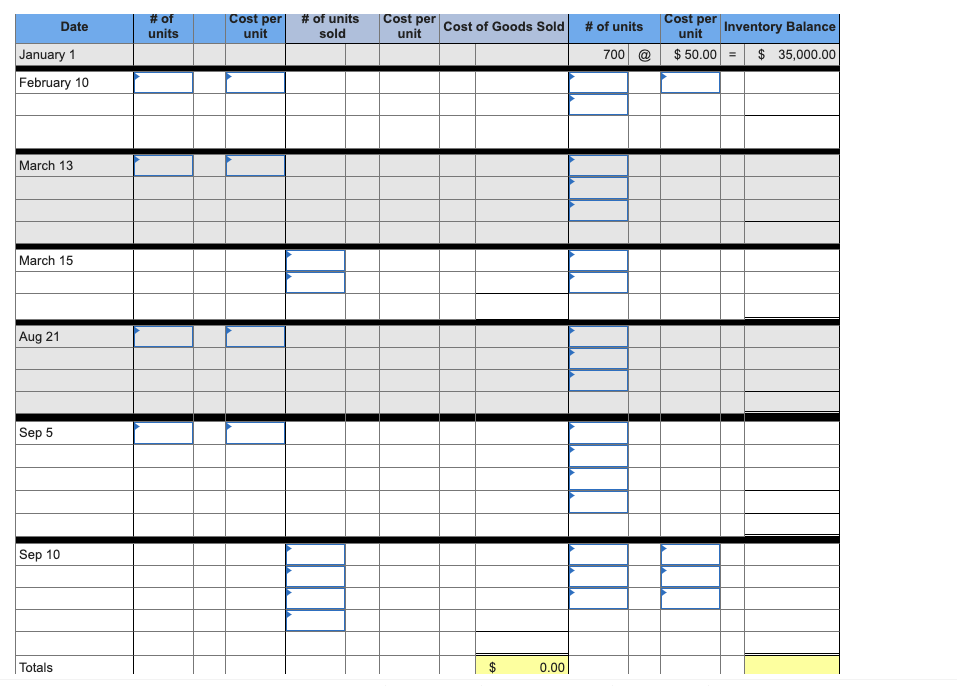


Please don't say this need more info as this is the entirety of the question given.
Problem 5-3A Perpetual: Alternative cost flows LO P1 Montoure Company uses a perpetual inventory system. It entered into the following calendar-year purchases and sales transactions Units Sold at Retail Units Acquired at Cost 700 units @ $50 per unit 350 units @ $44 per unit 150 units @ $32 per unit Date Activities Jan. 1 Beginning inventory Feb. 10 Purchase Mar. 13 Purchase Mar. 15 Sales Aug. 21 Purchase Sept. 5 Purchase Sept. 10 Sales Totals 705 units @ $80 per unit 190 units @ $55 per unit 540 units @ $51 per unit 730 units @ $80 per unit 1,435 units 1,930 units Required: 1. Compute cost of goods available for sale and the number of units available for sale. Cost of goods available for sale Number of units available for sale units 2. Compute the number of units in ending inventory. Ending inventory units 3. Compute the cost assigned to ending inventory using (a) FIFO, (b) LIFO, (C) weighted average, and (d) specific identification. For specific identification, units sold consist of 700 units from beginning inventory, 250 from the February 10 purchase, 150 from the March 13 purchase, 140 from the August 21 purchase, and 195 from the September 5 purchase. Goods Purchased # of Cost per units unit Cost Of Goods sold # of units Cost per sold Cost of Goods Sold unit Date Inventory Balance Cost per Inventory # of units unit Balance 700 @ $ 50.00 = $ 35,000.00 Jan 1 Feb 10 Mar 13 Mar 15 Aug 21 Sept 5 Sept 10 Tatalo nnn nnn Perpetual LIFO: Cost of Goods Sold Inventory Balance Goods Purchased # of Cost per units unit Date # of units sold Cost per Cost of Goods Sold unit # of units Cost per unit $ 50.00 = Inventory Balance $ 35,000.00 Jan 1 700 @ Feb 10 Mar 13 Mar 15 Aug 21 Sept 5 Sept 10 0 Totals $ non Weighted Average Perpetual: Goods Purchased # of Date units unit Cost of Goods Sold Cost per # of units sold Cost per cost of Goods Sold unit Inventory Balance Cost per Inventory # of units unit Balance 700 @ $50.00 = $ 35,000.00 Jan 1 Feb 10 Average Mar 13 Mar 15 Aug 21 Average Sept 5 Sept 10 Totals $ 0.00 Date # of units Cost per unit # of units sold Cost per Cost of Goods Sold unit # of units Cost per Inventory Balance unit $50.00 = $ 35,000.00 700 @ January 1 February 10 March 13 March 15 Aug 21 Sep 5 Sep 10 Totals $ 0.00 4. Compute gross profit earned by the company for each of the four costing methods. (Round your average cost per unit to 2 decimal places.) FIFO LIFO Weighted Average Specific Identification Sales Less: Cost of goods sold Gross profit $ 0 $ 0 $ 0 $ 0 5. The company's manager earns a bonus based on a percent of gross profit. Which method of inventory costing produces the highest bonus for the manager? OLIFO O Specific Identification Weighted Average O FIFOStep by Step Solution
There are 3 Steps involved in it
Step: 1

Get Instant Access to Expert-Tailored Solutions
See step-by-step solutions with expert insights and AI powered tools for academic success
Step: 2

Step: 3

Ace Your Homework with AI
Get the answers you need in no time with our AI-driven, step-by-step assistance
Get Started


